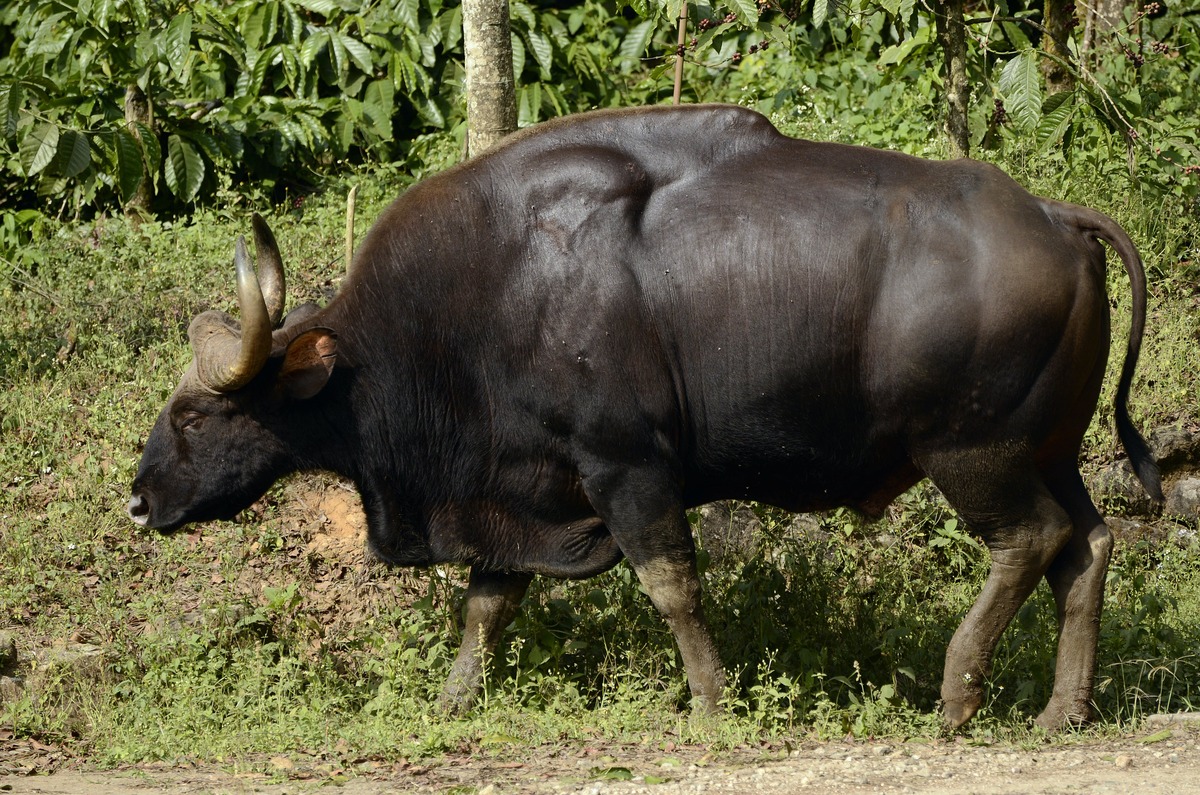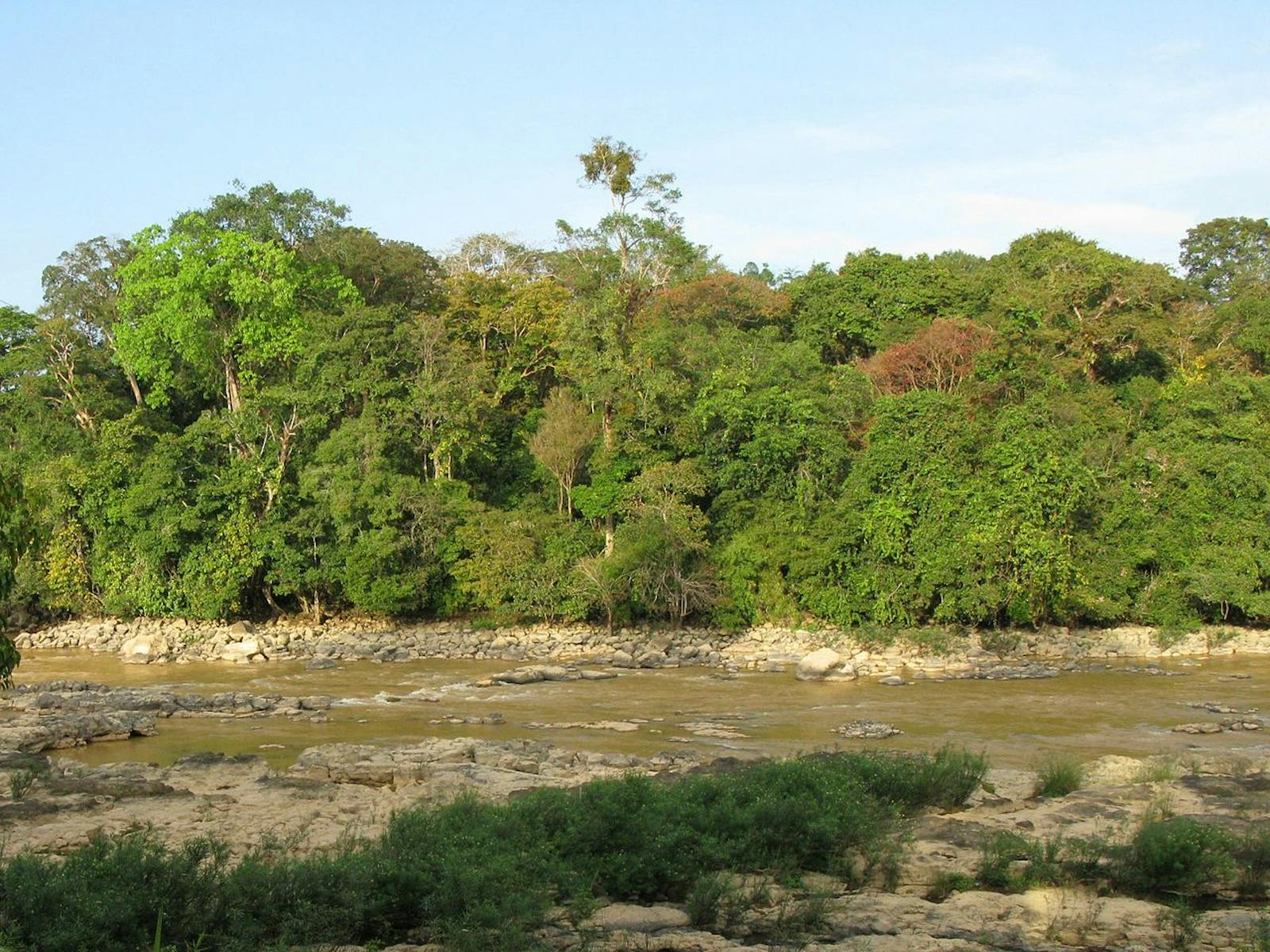Southeastern Indochina Dry Evergreen Forests
The ecoregion’s land area is provided in units of 1,000 hectares. The conservation target is the Global Safety Net (GSN1) area for the given ecoregion. The protection level indicates the percentage of the GSN goal that is currently protected on a scale of 0-10. N/A means data is not available at this time.
Bioregion: Indochina Mixed Forests & Peatlands (IM12)
Realm: Indomalaya
Ecoregion Size (1000 ha):
12,453
Ecoregion ID:
299
Conservation Target:
44%
Protection Level:
5
States: Cambodia, Laos, Thailand, Vietnam
A population of critically endangered Javan rhinoceros remained undiscovered until 1988 in the Southeastern Indochina Dry Evergreen Forests, along the Dong Nai River, a mere 150 km from the highly populated Ho Chi Minh City in Vietnam. This large animal had remained undetected and had survived all the frenetic activity, including jungle warfare, aerial defoliants and bombing, and subsequently poaching until a hunter was apprehended with their body parts in November 1988. This in turn prompted a survey in 1989 that revealed the presence of an estimated 10–15 rhinoceros.

The flagship species of the Southeastern Indochina Dry Evergreen Forests ecoregion is the red-shanked douc langur. Image credit: Creative Commons
In April 2010, possibly the last Javan rhinoceros in this ecoregion was poached in Cat Tien National Park in southern Vietnam. Driven by the regional and local demand for body parts used in the traditional medicine and alcohol trade, the intense hunting pressure on all large animals in the region made this end almost inevitable despite the millions of dollars of international conservation funds channeled to protect this small population. The extirpation of the rhinoceros from Cat Tien is symptomatic of the issues with large mammal conservation in this ecoregion, and indeed of Southeast Asia. Despite the creation of protected areas across the region and the infusion of conservation funds, the region still lacks effective protection, park management, and the political will for conservation.

Indian gaur. Image credit: P. Jeganathan, Creative Commons
The Southeastern Indochina Dry Evergreen Forests ecoregion sprawls across Cambodia and southern Vietnam, with parts extending into Thailand and Laos, and more or less surrounds the dry deciduous forests in north-central Cambodia. A significant proportion of the canopy trees are deciduous, losing their leaves at the peak of the dry season. The climate is humid, with average annual rainfall between 1,200 and 2,000 mm, and a 3-to-6 month dry period.
The forests are tall and multi-layered, rising to 30 or 40 m, but with a relatively open structure. The major species are of the family Dipterocarpaceae, with common species being Dipterocarpus alatus, D. costatus, Hopea odorata, Shorea guiso, S. hypochra, and Anisoptera costata. Other associated emergent trees include Ficus spp., Tetrameles nudiflora, and Heritiera javanica, all trees possessing large buttress roots. Lianas drape the trees, providing structural complexity to the forests. Bamboos are common, particularly as colonizing species in forest gaps and palms are present along watercourses.

Tiger. Image credit: Creative Commons
The ecoregion is globally outstanding for its species richness, especially for the mega mammal species. Over 160 mammals are known from here, including the tiger, Asian elephant, red-shanked douc langur, red-cheeked gibbon, pileated gibbon, wild dog, Malayan sun bear, clouded leopard, common leopard, gaur, banteng, and Eld’s deer, just to name a few. Unfortunately the populations of most species have been depressed by hunting. The tiger has not been recorded from Cambodia’s forests for over a decade, with the last camera trap photograph dating back to 2007. Over 455 bird species are known from the ecoregion, including several endangered species such as the giant ibis and the white-winged duck.
-CC-Yathin%20S%20Krishnappa-2005.jpg)
Asian elephant. Image credit: Yathin S Krishnappa, Creative Commons
On paper, over 20% of the ecoregion is protected, with very large protected areas declared in Cambodia. However, political commitment and law enforcement for effective conservation are missing, leaving wildlife and valuable timber trees vulnerable to poaching in all countries represented in this ecoregion.
Thus, priority recommended conservation interventions are to: 1) improve conservation effectiveness with government commitment and institutional and field staff capacity building; 2) strengthen monitoring and protection for wildlife and trees of high conservation priorities; and 3) incentivize local communities on conservation imperatives and engage them as stewards.
Citations
1. Wikramanayake, E, E. Dinerstein, et al. 2002. Terrestrial Ecoregions of the Indo-Pacific: A Conservation Assessment. Island Press.
2. Critical Ecosystem Partnership Fund. Ecosystem Profile. Indo-Burma Biodiversity Hotspot. 2011 Update. Oct 2012. https://www.cepf.net/Documents/final.indoburma_indochina.ep.pdf Accessed 15 December 2017
3. WWF. 2009. Forests of the Lower Mekong. Final Closeout Report. October 1, 1999 – September 30, 2009. The Global Conservation Program. Achievements and lessons learned from 10 years of support for threats-based conservation at a landscape and seascape scale. World Wildlife Fund.



